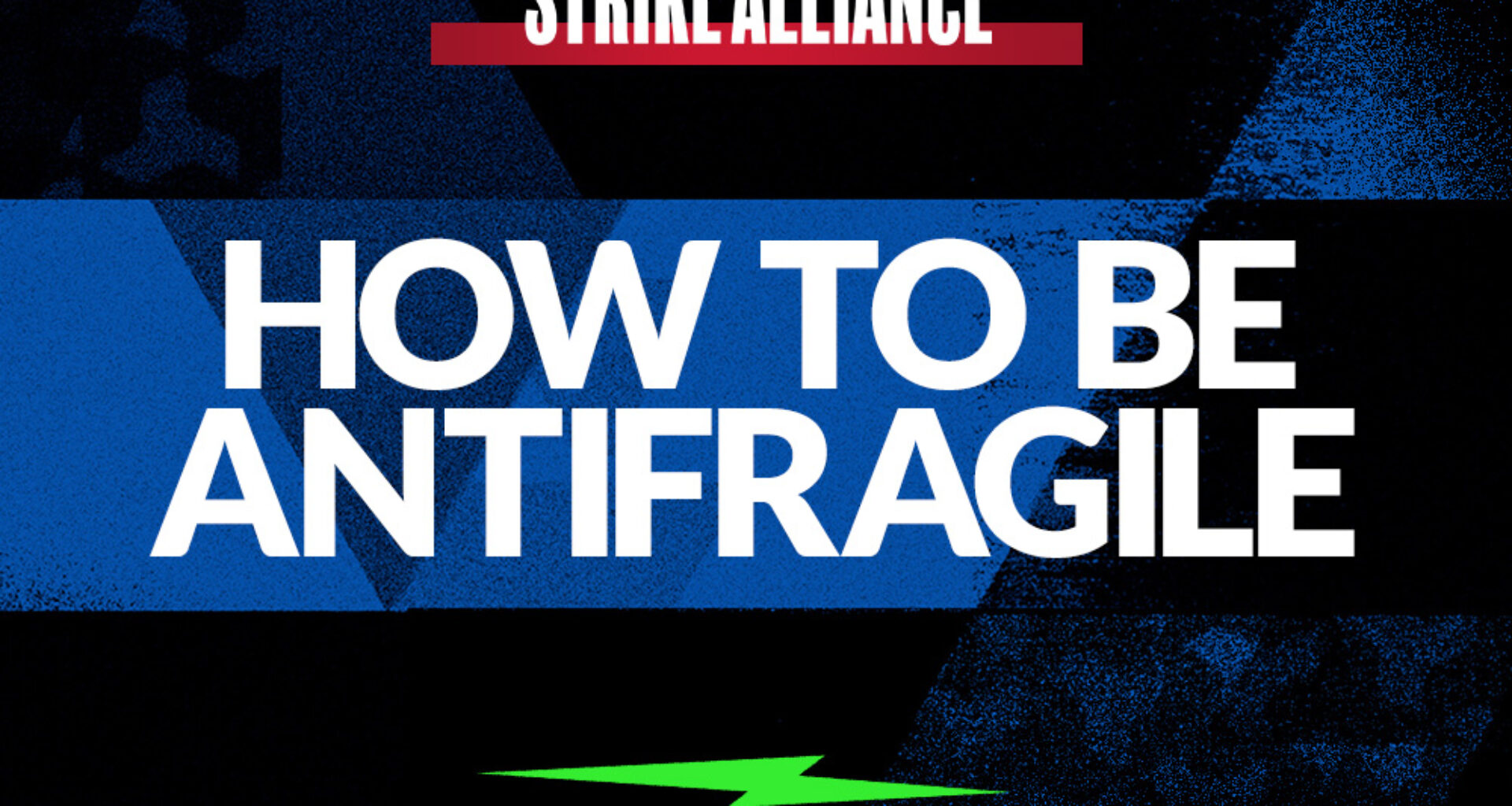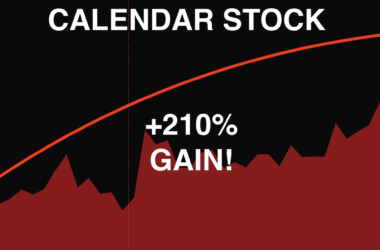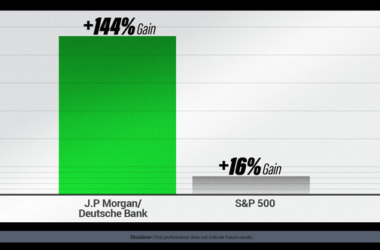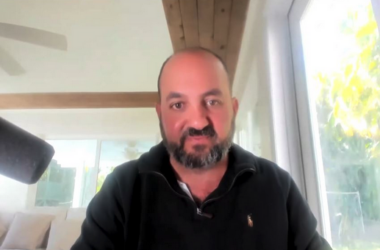Happy Friday, traders…
Ben here.
Most traders don’t realize how fragile they actually are…
They get shaken by losses. They panic when trades go against them. They second-guess themselves when things don’t play out exactly as expected.
But to win in the long term as a trader, you need to be the opposite. You need to be antifragile.
The concept of antifragility was developed by Nassim Nicholas Taleb, a former professional options trader and risk analyst turned writer and philosopher.

His idea is simple: Some things break under pressure. Some things withstand pressure. And some things get stronger because of it.
That last group — the ones that improve from stress, chaos, and uncertainty — is antifragile.
The human body is a perfect example. If you never put stress on your muscles, they weaken. If you never challenge your immune system, it becomes fragile.
But introduce small, controlled stress — like physical exercise or exposure to germs — and your body adapts, growing stronger than before.
Lifting weights creates tiny tears in muscle fibers. Your body repairs them, making them stronger. Without stress, you don’t grow.
Think about your bones. If you don’t use them, they weaken and become brittle. But weight-bearing exercise strengthens them. Stress makes them more resilient.
Compare this to a house of cards — it might look stable, but the slightest disturbance brings it crashing down. A system that collapses under stress is doomed to fail.
Now think of an impenetrable iron fortress — reinforced over time, designed to withstand attack, improving every time it’s tested.
That’s antifragility. And today, I’ll show you how to become an antifragile trader…
How Taleb Applied Antifragility to Trading
To Taleb, antifragility in trading means your portfolio doesn’t just survive black swans — it benefits from them.
Markets are full of randomness. Unexpected events, sudden downturns, and unpredictable moves can wipe out fragile traders.
But an antifragile trader builds a system that thrives in these conditions.
Taleb did this by structuring his trades so that he profited from extreme market movements, regardless of direction.
Instead of betting on stability, he positioned himself to benefit from uncertainty.
His approach was based on barbell strategy thinking:
- One side of the portfolio was ultra-conservative — cash, safe investments, and limited downside. This prevented major losses.
- The other side had asymmetrical bets — he would hold massive amounts of OTM (out-of-the-money) options, which could pay off massively in rare but extreme market events (black swans).
By doing this, Taleb ensured that no single market shock could wipe him out. In fact, extreme volatility — the very thing that destroys most traders — made him richer.
Example: In 2015, Taleb was holding cheap, OTM SPY puts and VIX calls as SPY tanked 8% and the VIX surged 50%. His entire portfolio increased by 20% while he profited more than $1 billion in a single day — entirely on bearish options contracts.
Antifragile traders don’t just hedge against risk. They position themselves to gain from randomness and skew.
Most traders blow up because they chase short-term consistency without considering extreme market moves.
Taleb’s strategy was the opposite: he accepted small, controlled losses while waiting for a big move that would make those losses irrelevant.
You can apply this same thinking to your trading.
Instead of trying to predict every move, position yourself to benefit from unexpected ones, by:
- Keeping a portion of your portfolio hedged. If you’re holding several calls at a time, hedge those contracts with SPY or QQQ puts.
- Using options to make small, asymmetric bets that can pay off massively in extreme scenarios.
- Carefully considering your max risk so a bad trade never takes you out of the game.
When you trade like this, volatility isn’t scary — it’s an opportunity.
Why Most Traders Are Fragile
The market is designed to work against your natural instincts. That’s why most traders fail.
Your brain is wired for survival. When things look dangerous, you run. When something seems like a sure thing, you chase it. That’s normal. It’s human.
But in the market, those instincts will ruin you.
- Fear: When a stock drops, your instinct is to panic and sell at the worst possible time.
- Greed: When a stock is soaring, your instinct is to jump in too late or hold too long.
- Optimism: The market uses hope against you. Just because something “should” happen doesn’t mean it will.
- Compassion: Healthy humans feel bad for things that fall apart. But the market doesn’t care. There’s no “fair.”
This is why you must train yourself to think differently than the average trader…
The Antifragile Mindset
At every moment, with every trade, ask yourself:
- Am I making this decision based on emotion?
- Is this the typical human response to this situation?
If the answer is yes, pause. Don’t react. Think.
Instead of emotions, use a system:
- What’s the risk? (This keeps greed in check.)
- What’s the plan? (A solid plan removes emotional swings.)
- What’s the best way to execute? (This helps you follow through even when your emotions scream at you to do the opposite.)
When you trade with a plan, you don’t have to rely on willpower in the moment. The decision has already been made. All you do is execute.
Risk Management = Antifragility
Fragile traders think about reward. Antifragile traders think about risk.
If you don’t manage risk, you will blow up your account. And when that happens, game over. You’re never getting that money back.
But there’s a simple way to avoid that fate: Define your risk before you enter a trade.
For example:
- “If I get into this trade at $100, I’ll get out at $98.”
- That’s $2 of risk.
- If you can accept that, take the trade. If not, pass.
Antifragile traders don’t hope. They don’t guess. They don’t chase.
They define risk. Accept risk. Execute their plan.
Antifragility Beyond Trading
Becoming antifragile isn’t just about trading — it’s a way of thinking that applies to life.
- A fragile person avoids stress and challenges.
- A resilient person can handle stress but doesn’t necessarily grow from it.
- An antifragile person seeks out challenges, knowing they’ll emerge stronger.
Antifragility is what makes great athletes, great entrepreneurs, and great traders.
Greg LeMond, a Tour de France champion cyclist, was once asked, “Does it get easier?”
He answered, “No. You just get faster.”
The same goes for trading. The market won’t get easier. But you can get better…
You can become antifragile.
Before we go, let’s look at:
💰The Biggest Smart Money Bets of the Day💰
- $3.3 million bearish bet on PLTR 02/14/2025 $110 calls @ $2.75 avg. (seen on 2/6)
- $2.3 million bullish bet on FLG 02/21/2025 $11 calls @ $1.65 avg. (seen on 2/6)
- $1.32 million bullish bet on CFLT 04/17/2025 $32 calls @ $2.65 avg. (seen on 2/6)
Happy trading,
Ben Sturgill
P.S. Jeff Zananiri’s AI-powered GAMMA Code system has already delivered returns of — 145%, 235%, 630%, and even 900% — all in 24 hours or less.*
And according to Jeff, some of the biggest algorithmic trading opportunities in history are just about to explode…
That’s why TODAY, February 7 at 10:00 a.m. EST, Jeff and Danny Phee are hosting a SPECIAL LIVE WORKSHOP to show you how to start weaponizing GAMMA for huge overnight gains.
This is your last chance to sign up — Click here to reserve your seat now!
*Past performance does not indicate future results




